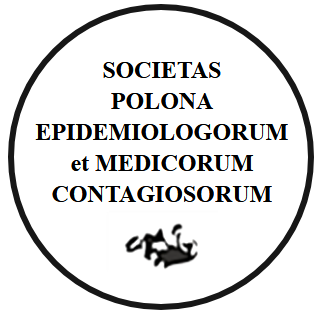RESEARCH PAPER
Rabies immunoglobulin overdose in post-exposure prophylaxis
1
Oddział IV, Wojewódzki Szpital Zakaźny w Warszawie, Polska
Submission date: 2025-02-13
Final revision date: 2025-05-01
Acceptance date: 2025-05-30
Online publication date: 2025-07-02
Publication date: 2025-10-03
Corresponding author
Agata Julia Łukasik
Oddział IV, Wojewódzki Szpital Zakaźny w Warszawie, Wolska 37, 01-201, Warszawa, Polska
Oddział IV, Wojewódzki Szpital Zakaźny w Warszawie, Wolska 37, 01-201, Warszawa, Polska
Przegl Epidemiol 2025;79(2):187-192
KEYWORDS
TOPICS
ABSTRACT
Rabies is a zoonotic viral infection caused by an RNA virus from the Rhabdoviridae family, a Lyssavirus species with the highest mortality rate among all infectious diseases. Post-exposure propylahis (PEP) should be applied as soon as possible in every person who has potentially been exposed to rabies virus. The procedure depends on the extent of exposure, person’s previous vaccination history and animal source of the exposure. Human exposure most commonly occurs through an animal bite that has broken the skin (99% of human rabies occur from infected dogs), the virus is present in the saliva of the sick animal.
This case illustrates the post-exposure prophylaxis instituted in non – immunized woman returning from Sri Lanka, who has been exposed to a dog bite. In this case an overdose of the human rabies immunoglobulin (HRIG) was administered to the patient. During further follow-up, it was determined that the excessive dose of HRIG did not result in any adverse effects, including suppression of the immune response. However ensuring the accuracy of drug administration is crucial to improving patient outcomes.
Share
RELATED ARTICLE
We process personal data collected when visiting the website. The function of obtaining information about users and their behavior is carried out by voluntarily entered information in forms and saving cookies in end devices. Data, including cookies, are used to provide services, improve the user experience and to analyze the traffic in accordance with the Privacy policy. Data are also collected and processed by Google Analytics tool (more).
You can change cookies settings in your browser. Restricted use of cookies in the browser configuration may affect some functionalities of the website.
You can change cookies settings in your browser. Restricted use of cookies in the browser configuration may affect some functionalities of the website.





